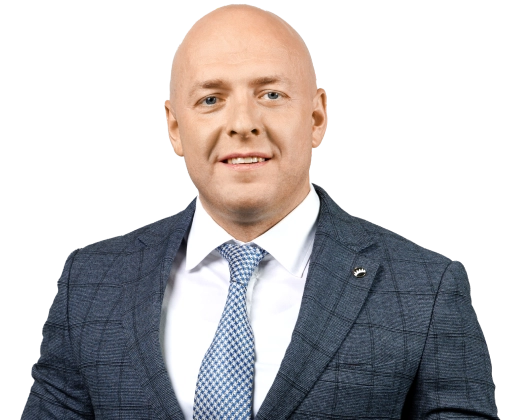Beneath the dazzling surface of AI’s progress in recent years lies a hidden reality – a tangled web of trade-offs and tensions. The convenience of personalized healthcare jostles with anxieties of invasive medical data analysis. Self-driving cars, promising safer roads, raise questions about who controls the wheel and our digital footprints left behind.


Unveiling the layers of this paradox demands a nuanced lens, considering both the undeniable benefits AI offers and the privacy sacrifices it often demands. This journey compels us to confront the uncomfortable truths beneath the shiny veneer of innovation, asking who truly benefits from AI’s ascent and at what cost to our most fundamental right – privacy. In this exploration, we’ll dissect the alluring promises of AI and lay bare the anxieties they ignite, charting a path toward a future where progress and protection can coexist.
Healthcare: A Doctor in the Machine
Imagine a world where AI algorithms scour your medical history, deciphering genetic codes and pinpointing disease risks before symptoms even appear. AI-powered virtual assistants analyze your daily health data, suggesting personalized lifestyle changes and predicting potential emergencies. This is the alluring future healthcare promise, where AI advancements become a proactive guardian, offering early diagnoses, customized treatment plans, and even predicting future health. However, beneath this gleaming progress lies the shadow of data privacy concerns. Sharing such intimate medical information requires immense trust, prompting us to carefully weigh the potential benefits against the anxieties of data being accessed and utilized.
Finance: Guardian of the Gates
In the bustling world of finance, AI takes on the role of a vigilant sentinel, guarding our financial transactions with an eagle eye. AI-powered fraud detection systems analyze spending patterns, detect anomalies in real time, and block suspicious activities before they drain our accounts. This cloak of financial security comes at a cost, though. Every swipe of a card, every online purchase, contributes to a detailed portrait of our financial lives. As in Healthcare, the question then arises here too: how much are we willing to sacrifice in terms of data privacy for the sake of financial security, and who should be the custodian of this sensitive information?
Retail: The Whispering Oracle
Another example from Retail: step into a world where stores know you better than you know yourself. AI-powered recommendation engines analyze your online browsing habits, purchasing history, and even social media interactions to predict your desires and curate a personalized shopping experience. Targeted marketing campaigns whisper enticements tailored to your tastes, effortlessly guiding you towards purchases you didn’t even know you wanted.
This personalized paradise for consumers comes with a hidden price tag – the erosion of privacy. Every click, every scroll, adds to a detailed profile that dictates the products we see, the prices we pay, and even the brands we encounter. In this game of personalized convenience, we must ask ourselves: at what point does individual autonomy get blurred by the allure of tailored recommendations?
The Privacy Erosion Conundrum
As we mentioned, the progress hinges on the collection and analysis of vast amounts of personal data. This raises some concerns about implementing AI in our life on a permanent basis.
Data Surveillance
While AI’s potential for progress shines bright, its foundation rests upon a vast ocean of personal data – our online activity, location trails, and even social media whispers. This dependence raises a chilling specter: data surveillance. The specter of governments and corporations peering over our digital shoulders, gleaning insights into our lives, fuels fears of mass surveillance and the potential misuse of this sensitive information. This specter chills not only with its invasive nature, but also with its chilling implications for individual freedoms and potential abuses of power.


Algorithmic Bias
But the concerns go beyond the watchful eye of Big Brother. AI’s algorithms, trained on vast datasets, can become unwitting vessels of algorithmic bias. Imagine a credit scoring system fueled by biased data, unfairly disadvantaged certain demographics. Or a criminal justice system where AI-powered predictions exacerbate existing prejudices. These are not dystopian nightmares; they are real possibilities if we fail to address the inherent biases that can creep into the heart of AI.
Lack of Transparency
Furthermore, the inner workings of these algorithms often remain shrouded in a veil of secrecy. This lack of transparency creates an unsettling void – we surrender our data, yet have little understanding of how it’s used, by whom, and for what purposes. This opacity erodes trust, leaving us vulnerable to potential manipulation and exploitation. The lack of clarity about who controls this data and how it’s utilized empowers those behind the curtain, while leaving individuals feeling powerless and exposed.
Striking a Balance
So, how do we navigate this complex landscape? Striking a balance between innovation and protection requires a multi-pronged approach.
Empowering the Individual: Imagine a world where you’re no longer just a data point, but the master of your own digital canvas. That’s the essence of data ownership and control. You decide what information is collected, who can access it, and for what purposes. This shift in power creates an environment where trust flourishes, allowing you to engage with AI innovations with informed consent and confidence.


However, trust requires transparency. We need to peel back the curtain on the complex world of AI algorithms. Enhanced transparency demands that developers and data controllers shed light on how our data is collected, used, and stored. This demystification, through clear and accessible explanations, allows for informed choices and fosters a sense of partnership rather than passive surrender.
Finally, imagine facing an automated decision that impacts your life – a denied loan, a flagged security risk – yet having no clue why. This opaqueness fosters fear and frustration. This is where the right to explanation steps in. Knowing how and why AI algorithms make decisions that affect us not only promotes fairness and accountability but also empowers us to challenge potentially biased or discriminatory outcomes.
Building a Strong Fence Around the Data Playground
While individual empowerment is crucial, it’s only one piece of the puzzle. We need robust legal frameworks to safeguard our privacy in the digital age. Stringent data protection laws like GDPR and CCPA offer a starting point, but their global adoption and consistent enforcement are vital. Imagine a world where these laws act as sturdy fences, protecting our data from unauthorized access and misuse, regardless of geographical borders.
However, just like fences without watchtowers, strong laws need oversight. This is where algorithmic oversight and auditing come in. Independent bodies need to scrutinize the development and deployment of AI systems, ensuring they adhere to ethical principles and don’t perpetuate discrimination. These watchtowers provide the crucial checks and balances needed to prevent AI from becoming a tool of oppression rather than empowerment.
Finally, imagine a world where data havens – lawless territories where personal information sits unprotected – become relics of the past. This necessitates international collaboration on data protection laws, harmonizing regulations and closing loopholes that undermine individual rights. Just as strong fences lose their power when gaps appear, global collaboration is vital to create a seamless, protective barrier around our collective data.
Building Ethical AI
Empowering individuals and fortifying the legal landscape are essential, but without ethical considerations at the core, AI risks becoming a Frankenstein’s monster of progress. This is where privacy-preserving techniques like differential privacy and anonymization come in. Imagine extracting valuable insights from data without exposing individual identities, allowing us to reap the benefits of AI while shielding our privacy.


Furthermore, let’s design AI not just for efficiency, but for humanity. Human-centered design demands that AI development prioritizes ethical principles and values. This means focusing on solving real-world problems while respecting individual rights and ensuring inclusive, unbiased outcomes. We must ensure that AI becomes a tool that complements and empowers humanity, not one that exploits and alienates.
Finally, imagine a world where understanding AI isn’t reserved for tech wizards. Public education and awareness is crucial for responsible application and societal acceptance. By empowering individuals and enterprises with knowledge about AI technology trends, its implications for privacy, and their rights as data subjects, we create a society that can engage with AI critically and confidently.
Conclusion: A Collective Challenge
The Data Privacy Paradox is a complex challenge that requires a collective effort from individuals, governments, and the tech industry. By prioritizing transparency, ethical development, and robust legal frameworks, we can harness the power of AI while safeguarding individual privacy and building a future where technology empowers, not exploits. Through continuous dialogue, education, and collaborative action, we can ensure that AI innovation flourishes on a foundation of trust and respect for human rights, navigating the delicate balance between progress and protection in the age of AI.
About the Author:


Valentin Kuzmenko is Chief Commercial Officer / VP of Sales at Andersen Lab. Valentin works in close cooperation with customers to define, craft, and improve high-performing software solutions across numerous industries.














Add comment